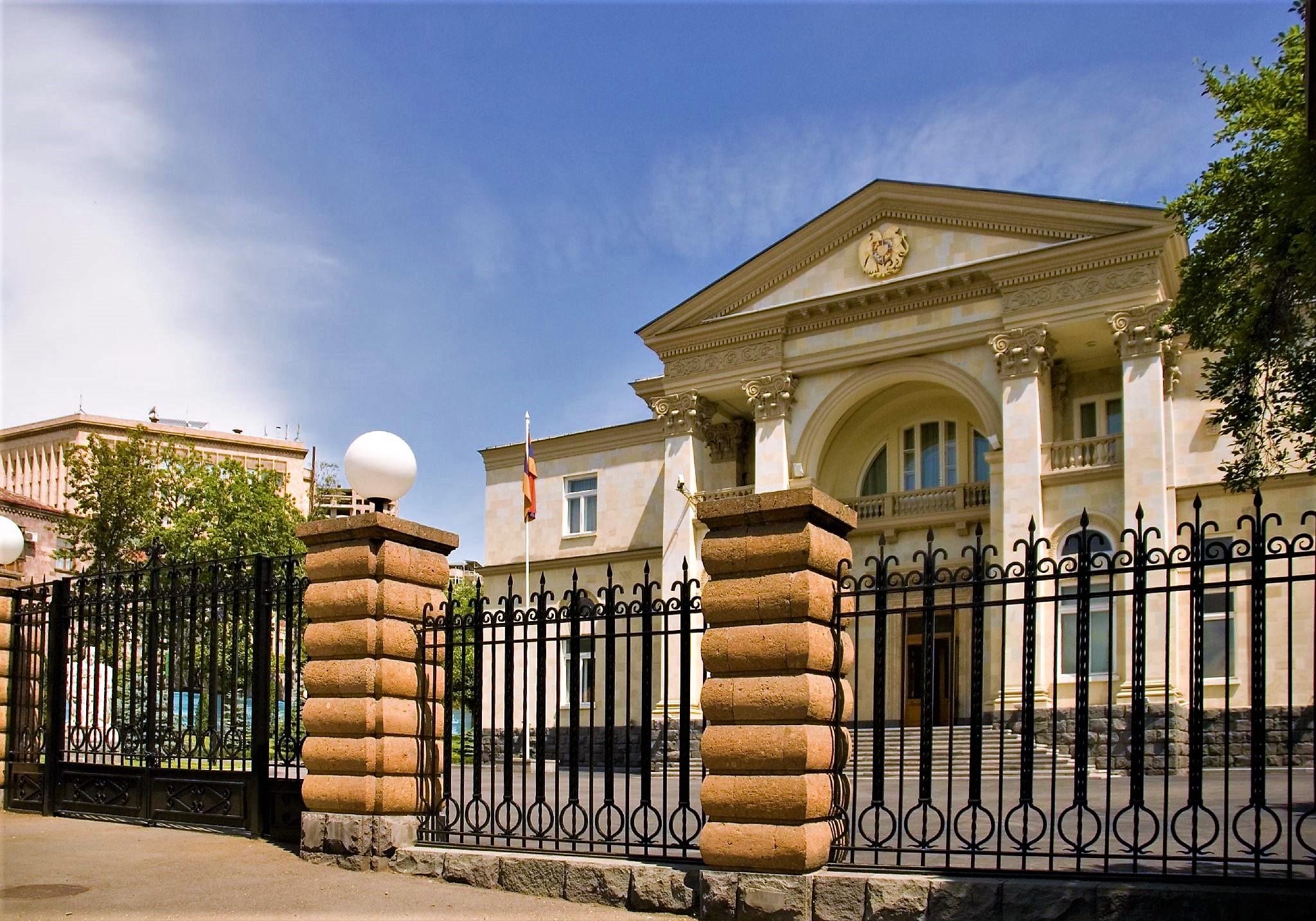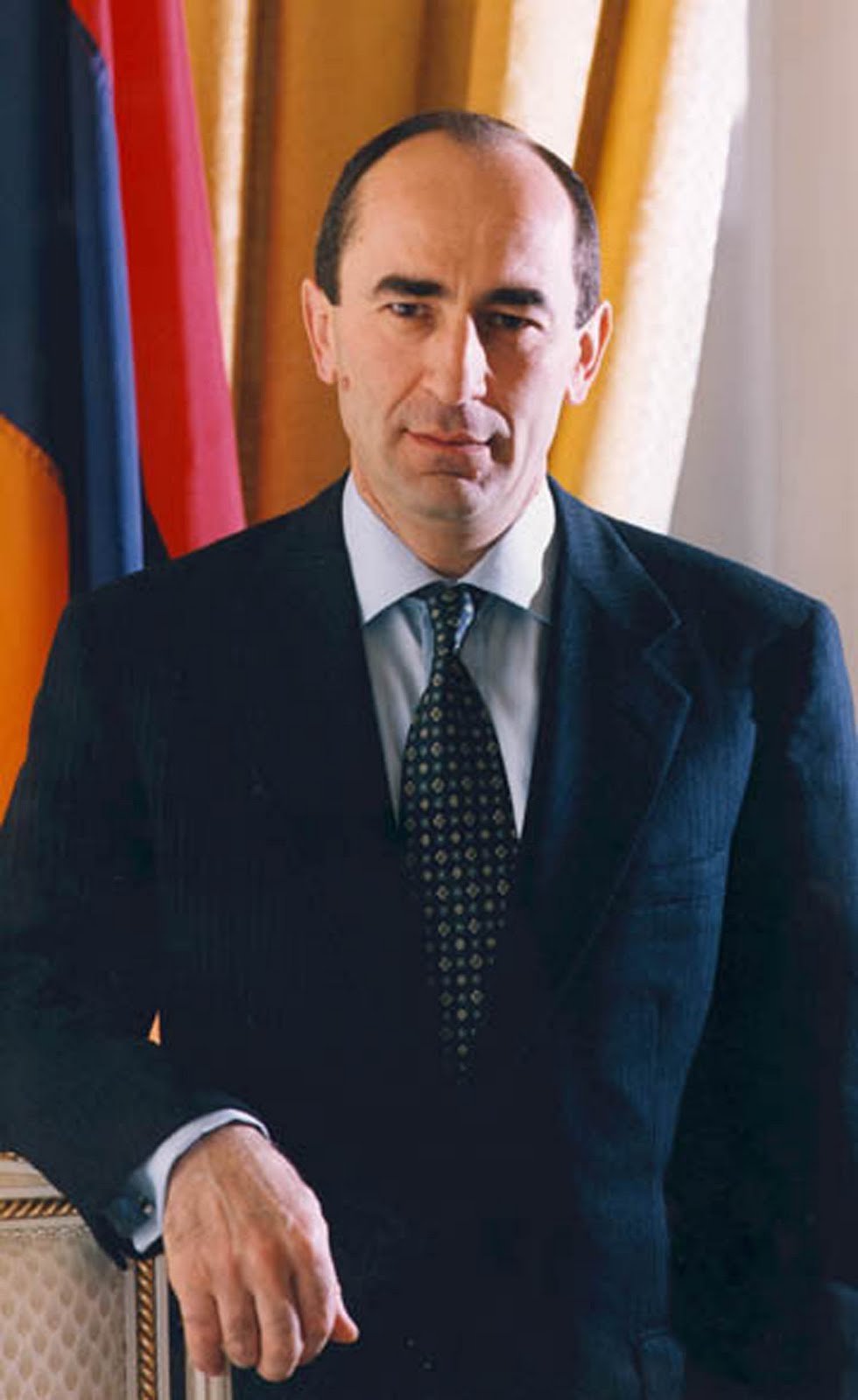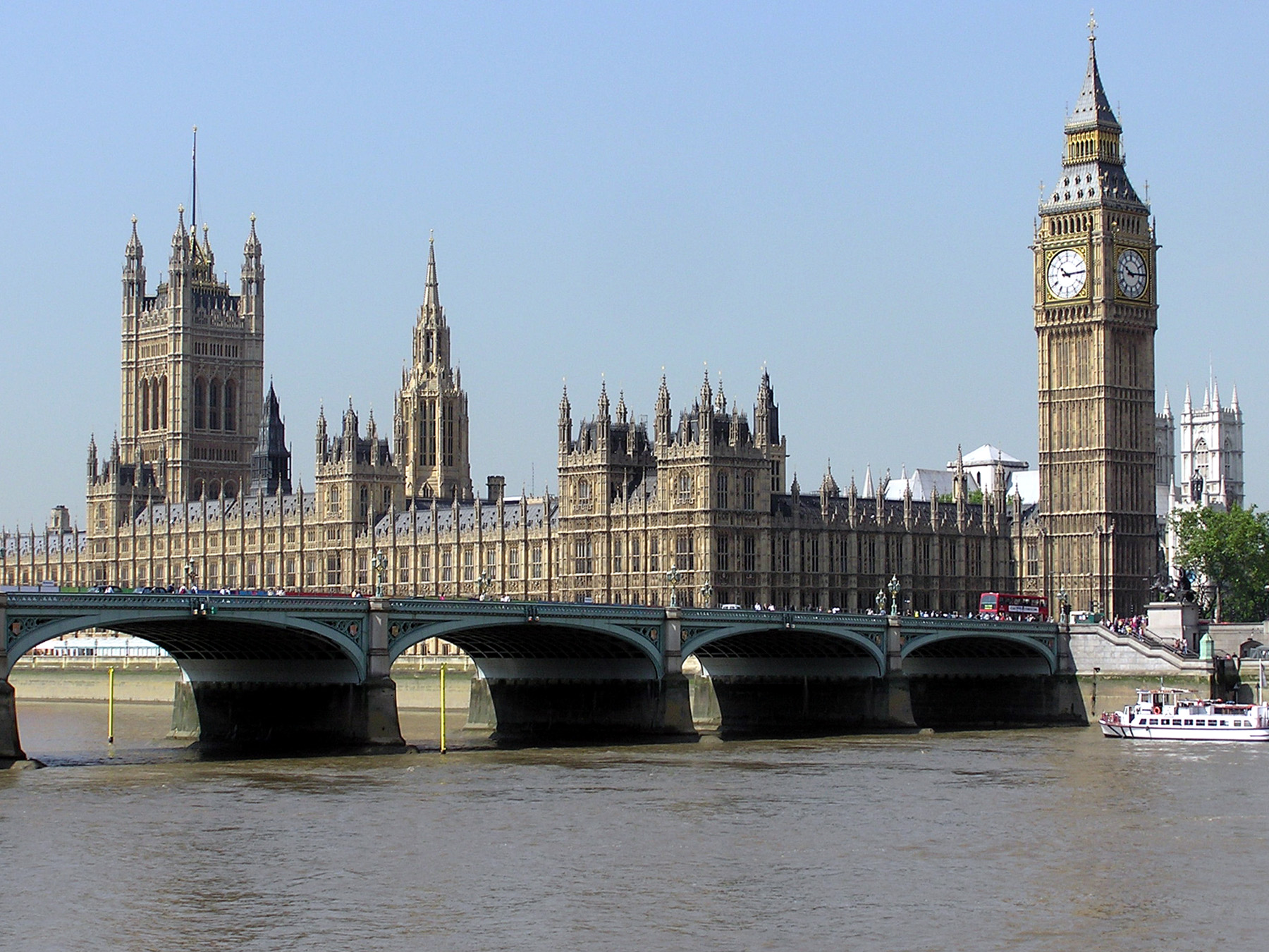|
President's Residence, Yerevan
The Residence of the President of Armenia (; ''Hayastani Hanrapetut'yun Nakhagahi Nstavayr'') is located at 26/1 Baghramyan Avenue in Yerevan. History The building was designed by Mark Grigorian as the premises for the Council of Ministers of the Armenian Soviet Socialist Republic and completed in 1951. It served as the residence of the president of Armenia from 11 November 1991 until 9 April 2018, when Armenia was officially turned into parliamentary republic, and the building became the official residence of the prime minister. The president's residence was moved to Mashtots Avenue. On 8 November 2018, the Armenian government approved an initiative to relocate the prime minister's residence to Government House 1 and reallocate the building on Baghramyan Avenue 26 again as the president's residence. Public access Since 2018, the Honour Guard of the Ministry of Defense of Armenia has performed guard duty at the residence. The gates to the residence are usually open to ... [...More Info...] [...Related Items...] OR: [Wikipedia] [Google] [Baidu] |
Baghramyan Avenue
Marshal Baghramyan Avenue () is an avenue in the central Kentron District, Kentron and the northwestern Arabkir District, Arabkir districts of Yerevan, Armenia. The avenue is named after the Soviet Union, Soviet Armenian people, Armenian commander and Marshal of the Soviet Union Ivan Bagramyan, Hovhannes Baghramyan whose statue stands at the central part of the avenue. It was known as the Friendship Avenue (Comradeship Avenue) between 1970 and 1995, as a tribute to the friendship of all Soviet Union member nations. The avenue starts with the Place de France at the east and ends up with the Barekamutyun Square at the west. It is mainly home to educational, government and foreign diplomatic mission buildings. Notable buildings Marshal Baghramyan Avenue is home to a series of notable buildings and structures. Government buildings * The Prime Minister's Residence, Yerevan, Prime Minister's Residence (commonly known as Baghramyan 26) * The National Assembly (Armenia), National Assem ... [...More Info...] [...Related Items...] OR: [Wikipedia] [Google] [Baidu] |
Yerevan
Yerevan ( , , ; ; sometimes spelled Erevan) is the capital and largest city of Armenia, as well as one of the world's List of oldest continuously inhabited cities, oldest continuously inhabited cities. Situated along the Hrazdan River, Yerevan is the administrative, cultural, and industrial center of the country, as its primate city. It has been the Historical capitals of Armenia, capital since 1918, the Historical capitals of Armenia, fourteenth in the history of Armenia and the seventh located in or around the Ararat Plain. The city also serves as the seat of the Araratian Pontifical Diocese, which is the largest diocese of the Armenian Apostolic Church and one of the oldest dioceses in the world. The history of Yerevan dates back to the 8th century BC, with the founding of the fortress of Erebuni Fortress, Erebuni in 782 BC by King Argishti I of Urartu, Argishti I of Urartu at the western extreme of the Ararat Plain. Erebuni was "designed as a great administrative and reli ... [...More Info...] [...Related Items...] OR: [Wikipedia] [Google] [Baidu] |
Armenia
Armenia, officially the Republic of Armenia, is a landlocked country in the Armenian Highlands of West Asia. It is a part of the Caucasus region and is bordered by Turkey to the west, Georgia (country), Georgia to the north and Azerbaijan to the east, and Iran and the Azerbaijani exclave of Nakhchivan Autonomous Republic, Nakhchivan to the south. Yerevan is the Capital city, capital, largest city and Economy of Armenia, financial center. The Armenian Highlands has been home to the Hayasa-Azzi, Shupria and Nairi. By at least 600 BC, an archaic form of Proto-Armenian language, Proto-Armenian, an Indo-European languages, Indo-European language, had diffused into the Armenian Highlands.Robert Drews (2017). ''Militarism and the Indo-Europeanizing of Europe''. Routledge. . p. 228: "The vernacular of the Great Kingdom of Biainili was quite certainly Armenian. The Armenian language was obviously the region's vernacular in the fifth century BC, when Persian commanders and Greek writers ... [...More Info...] [...Related Items...] OR: [Wikipedia] [Google] [Baidu] |
President Of Armenia
The president of Armenia () is the head of state and the guarantor of independence and territorial integrity of Armenia elected to a single seven-year term by the National Assembly of Armenia. Under Armenia's parliamentary system, the president is simply a figurehead and holds ceremonial duties, with most of the political power vested in the parliament and prime minister. Vahagn Khachaturyan has been serving as president since 13 March 2022. __TOC__ Background The president of the republic strives to uphold the constitution, and to ensure the regular functioning of the executive and judicial powers. They are the guarantor of the independence, territorial integrity and security of the republic. The president of the republic is immune: they cannot be prosecuted or held liable for actions arising from their status during and after their term of office. For the actions not connected with their status the president of the Republic may be prosecuted when their term of office expi ... [...More Info...] [...Related Items...] OR: [Wikipedia] [Google] [Baidu] |
Mark Grigorian
Mark Grigorian (, ; April 29, 1900 – January 10, 1978) was a Soviet Armenian Neoclassical architect. Life Born in Nakhichevan-on-Don, southern Russia, Grigorian moved to Soviet Armenia in 1924. He graduated from the Yerevan State University in 1928 and was appointed as the chief architect of Yerevan in 1939, succeeding Nikolay Buniatyan. Works Grigorian designed (or co-designed) several major landmarks of Yerevan, including the buildings where the three branches of the government are housed—all on Baghramyan Avenue, and three of the five buildings around Republic Square, along with Eduard Sarapian. Below are listed his most notable works, all in Yerevan: Awards *Honored Artist of the Armenian SSR (11.18.1940) *Order of Lenin (24.11.1945) * Stalin Prize of 3rd degree (1951) - for the architecture of the building of the Central Committee of the Communist Party of the Armenian SSR in Yerevan *Honored Architect of the Armenian SSR (1969) *State Prize of the Armenian SSR (1971 ... [...More Info...] [...Related Items...] OR: [Wikipedia] [Google] [Baidu] |
Council Of Ministers Of The Armenian Soviet Socialist Republic
The Government of the Republic of Armenia () or the executive branch of the Armenian government is an executive council of government ministers in Armenia. It is one of the three main governmental branches of Armenia and is headed by the Prime Minister of Armenia. Current government The incumbent government of Armenia is led by Prime Minister Nikol Pashinyan who, as leader of Civil Contract (the party which won elections in December 2018), was appointed prime minister on 14 January 2019 by President Armen Sarkissian. Powers Powers of Government granted by former revision of Constitution (accepted in 2005) Resignation of the Government and its formation Following the Article 55 of Armenian Constitution, the Republic's president must accept resignation of the government on the day of # first sitting of newly elected Nation Assembly # assumption of the office by the president of the Republic # expression of the vote of no confidence to the Government # resignation of the pri ... [...More Info...] [...Related Items...] OR: [Wikipedia] [Google] [Baidu] |
Parliamentary System
A parliamentary system, or parliamentary democracy, is a form of government where the head of government (chief executive) derives their Election, democratic legitimacy from their ability to command the support ("confidence") of a majority of the legislature, to which they are held accountable. This head of government is usually, but not always, distinct from a ceremonial head of state. This is in contrast to a presidential system, which features a president who is not fully accountable to the legislature, and cannot be replaced by a simple majority vote. Countries with parliamentary systems may be Constitutional monarchy, constitutional monarchies, where a monarch is the head of state while the head of government is almost always a member of parliament, or Parliamentary republic, parliamentary republics, where a mostly ceremonial president is the head of state while the head of government is from the legislature. In a few countries, the head of government is also head of state ... [...More Info...] [...Related Items...] OR: [Wikipedia] [Google] [Baidu] |
Mashtots Avenue
Mashtots Avenue ( ''Mashtots'i Poghota''), known as Lenin Avenue until 1990, is an avenue in the central Kentron district of Yerevan, Armenia. The avenue starts with the Victory Bridge at the south and ends up with the Matenadaran museum to the north. Notable buildings Many prominent buildings in the city of Yerevan are located on the Mashtots Avenue. Below is a list of significant structures located on the avenue (from north to south): * Blue Mosque (1768) * Eduard Isabekyan Gallery (2007) * Yerevan Opera Theater (1933) * Nairi Cinema (1954) *Matenadaran The Matenadaran (), officially the Mesrop Mashtots Institute of Ancient Manuscripts, is a museum, repository of manuscripts, and a research institute in Yerevan, Armenia. It is the world's largest repository of Armenian manuscripts. It was establ ... (1959) * President's Residence (1985) * Yerevan State Marionettes Theatre (1987) Gallery File:Ulice Mesropa Maštoce.jpg, Mashtots Avenue from south to north File:Armenian a ... [...More Info...] [...Related Items...] OR: [Wikipedia] [Google] [Baidu] |
Government House, Yerevan
The Government House Number 1 (Armenian: Հայաստանի Հանրապետության կառավարական տուն; ''Hayastani Hanrapetut'yan Karavarakan Tun'') is located on Republic Square, Yerevan. It was designed by Alexander Tamanian, who was awarded the Soviet State Award in 1942 for this work. It is the official residence of the prime minister of Armenia. See also * Government of Armenia * National Assembly In politics, a national assembly is either a unicameral legislature, the lower house of a bicameral legislature, or both houses of a bicameral legislature together. In the English language it generally means "an assembly composed of the repr ... References Buildings and structures in Yerevan Official residences in Armenia {{Armenia-struct-stub ... [...More Info...] [...Related Items...] OR: [Wikipedia] [Google] [Baidu] |
Honour Guard Battalion (Armenia)
The Honour Guard Company of the Ministry of Defence of Armenia () is a military unit of Armed Forces of Armenia that performs protocol tasks for high-ranking officials at the President's House, Yerevan, Presidential Palace and the Prime Minister's Residence, Yerevan, Prime Minister's Residence. The unit is under direct command of the Ministry of Defense of Armenia, Ministry of Defence of Armenia. Most members of the unit are graduates of the Vazgen Sargsyan Military University. Overview The company was established on 18 January 1993. The unit's first major event was the funeral of Monte Melkonian in June 1993. The first official welcoming ceremony that the honour guard took part in was for the visit of Russian Defense Minister Pavel Grachev in 1994. That same day, then unit commander Ashot Hakobyan was promoted to the rank of Captain. The company has taken part in the traditional Independence Day (Armenia), Independence Day military parade on Republic Square, Yerevan, Republic Squ ... [...More Info...] [...Related Items...] OR: [Wikipedia] [Google] [Baidu] |
Official Residences In Armenia
An official is someone who holds an office (function or mandate, regardless of whether it carries an actual working space with it) in an organization or government and participates in the exercise of authority (either their own or that of their superior or employer, public or legally private). An elected official is a person who is an official by virtue of an election. Officials may also be appointed ''ex officio'' (by virtue of another office, often in a specified capacity, such as presiding, advisory, secretary). Some official positions may be inherited. A person who currently holds an office is referred to as an incumbent. Something "official" refers to something endowed with governmental or other authoritative recognition or mandate, as in official language, official gazette, or official scorer. Etymology The word ''official'' as a noun has been recorded since the Middle English period, first seen in 1314. It comes from the Old French ' (12th century), from the Latin">-4; ... [...More Info...] [...Related Items...] OR: [Wikipedia] [Google] [Baidu] |
Buildings And Structures In Yerevan
A building or edifice is an enclosed structure with a roof, walls and windows, usually standing permanently in one place, such as a house or factory. Buildings come in a variety of sizes, shapes, and functions, and have been adapted throughout history for numerous factors, from building materials available, to weather conditions, land prices, ground conditions, specific uses, prestige, and aesthetic reasons. To better understand the concept, see ''Nonbuilding structure'' for contrast. Buildings serve several societal needs – occupancy, primarily as shelter from weather, security, living space, privacy, to store belongings, and to comfortably live and work. A building as a shelter represents a physical separation of the human habitat (a place of comfort and safety) from the ''outside'' (a place that may be harsh and harmful at times). buildings have been objects or canvasses of much artistic expression. In recent years, interest in sustainable planning and building pract ... [...More Info...] [...Related Items...] OR: [Wikipedia] [Google] [Baidu] |






